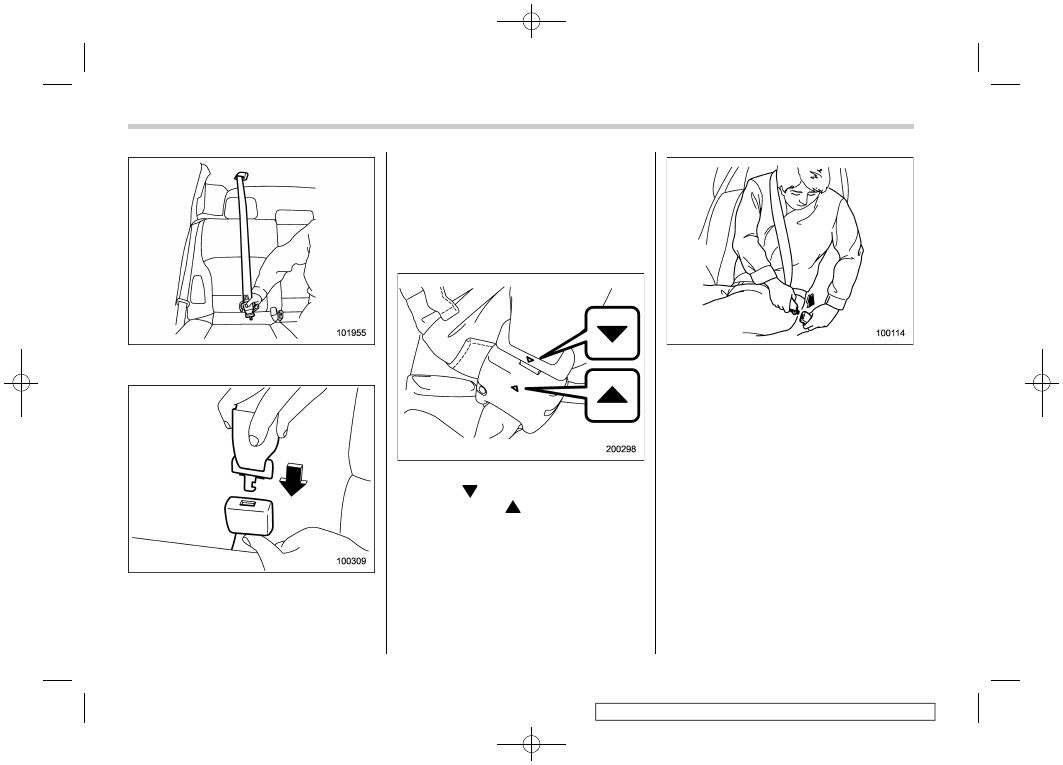Subaru Outback (2019 year). Instruction - part 4

(54,1)
北米Model "A2550BE-A" EDITED: 2018/ 5/ 9
2. Pull out the seatbelt slowly from the
retractor.
3. After confirming that the webbing is not
twisted, insert the connector (tongue)
attached at the webbing end into the
buckle on the right-hand side until a click
is heard.
.
If the belt stops before reaching the
buckle, return the belt slightly and pull it
out more slowly.
.
If the belt still cannot be unlocked, let
the belt retract slightly after giving it a
strong pull, then pull it out slowly again.
4. After fastening the seatbelt, make sure
that the “
” mark on the connector
(tongue) and the “
” mark on the buckle
face outwards.
5. Insert the center seatbelt tongue plate
into the center seatbelt buckle until it
clicks.
Seat, seatbelt and SRS airbags/Seatbelts
1-22